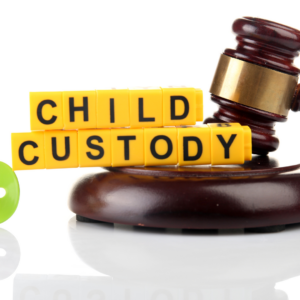Domestic violence is a distressing reality that affects countless individuals and families worldwide. When faced with such a harrowing situation, taking immediate action to safeguard the rights and wellbeing of victims becomes paramount. This blog post aims to shed light on the legal measures available to protect victims of domestic violence, including restraining orders and emergency custody. By understanding these legal tools, victims can find the support and protection they need to navigate through the storm of domestic violence.

Recognizing Domestic Violence
Behind closed doors, domestic violence can silently wreak havoc on individuals and families, leaving lasting scars on victims. Recognizing the various forms of abuse and understanding that it transcends demographics are critical steps in addressing this pervasive issue. This section delves into the importance of identifying the signs of domestic violence and emphasizes the urgency of seeking help promptly, as it knows no boundaries and can impact anyone, regardless of age, gender, or social status.
- Understanding the Many Faces of Domestic Violence: Domestic violence is not confined to physical abuse alone; it takes on multiple forms. This section sheds light on the different manifestations of domestic violence, including emotional manipulation, psychological intimidation, and financial control. By recognizing these insidious tactics, individuals can identify when they are in potentially dangerous situations.
- Identifying Red Flags: Signs of Domestic Violence: This section provides a comprehensive list of common red flags that may indicate the presence of domestic violence. From unexplained injuries and isolation from friends and family to constant belittling and controlling behavior, understanding these warning signs can empower victims and their loved ones to take action.
- Breaking the Silence: Overcoming the Stigma of Domestic Violence: One of the significant barriers to seeking help is the shame and stigma often associated with being a victim of domestic violence. This section discusses the importance of breaking the silence and ending the secrecy surrounding this issue. Encouraging open dialogue and fostering a non-judgmental environment can empower victims to come forward and access the support they desperately need.
- The Role of Support Systems: Having a strong support system is instrumental in helping victims break free from the cycle of abuse. This section highlights the significance of friends, family, and community resources in providing emotional support and practical assistance to victims. Additionally, it emphasizes the importance of bystanders in recognizing and intervening when they witness signs of domestic violence.
- Seeking Help: Reaching Out to Professionals: When facing domestic violence, reaching out to professionals who specialize in this area is crucial. This section provides information about domestic violence hotlines, local shelters, counseling services, and legal aid organizations. Empowering victims with the knowledge of where to turn for help can make a life-saving difference.

The Role of Restraining Orders
When faced with the terrifying reality of domestic violence or harassment, victims need immediate protection from their abusers. Restraining orders, also known as protective orders or orders of protection, play a pivotal role in providing that much-needed shield. This section will shed light on the different types of restraining orders, the process of obtaining one, and how they offer victims immediate relief and protection.
- Types of Restraining Orders: There are various types of restraining orders, each tailored to specific situations. This section explains the key distinctions between civil and criminal restraining orders, as well as the variations in scope, duration, and requirements for obtaining them. From domestic violence restraining orders to workplace harassment orders, understanding the available options empowers victims to choose the most suitable course of action.
- The Process of Obtaining a Restraining Order: This section walks through the step-by-step process of obtaining a restraining order. It covers everything from gathering evidence and completing necessary paperwork to filing the request at the appropriate court. Emphasizing the importance of seeking legal counsel and assistance, this section aims to make the process less daunting for victims who may be in a vulnerable state.
- The Role of Restraining Orders in Providing Immediate Relief: One of the most significant advantages of a restraining order is the immediate relief it provides. This section delves into how restraining orders can prohibit abusers from contacting or coming near the victim, their residence, workplace, or children’s school. It highlights the sense of safety and security that these orders can instill in victims, allowing them to start the journey toward healing.
- Violation and Enforcement of Restraining Orders: A restraining order’s effectiveness hinges on its enforcement. This section discusses the consequences faced by abusers who violate the terms of the order and how victims can report any violations. Understanding the enforcement process reinforces the importance of taking restraining orders seriously and ensures that victims are not left defenseless.
- Resources and Support for Restraining Order Applicants: Seeking a restraining order can be overwhelming, and victims need access to support and resources throughout the process. This section lists organizations, hotlines, and legal aid services that can offer guidance, emotional support, and assistance with the restraining order application. Empowering victims with this knowledge equips them to take the necessary steps towards their safety.

Seeking Emergency Custody
In domestic violence situations, the safety and wellbeing of children must take precedence. When children are exposed to harmful environments, swift action becomes paramount to ensure their protection. This section emphasizes the critical importance of seeking emergency custody orders in such cases. By delving into the legal requirements and the role of family courts in granting emergency custody, we aim to highlight the measures taken to safeguard vulnerable children from the effects of domestic violence.
- Putting Children’s Safety First: The impact of domestic violence on children can be profound and long-lasting. This section underscores the necessity of prioritizing the safety and welfare of children in such situations. It sheds light on the potential consequences of prolonged exposure to violence and emphasizes the urgency of taking immediate action to protect them.
- Understanding Emergency Custody Orders: Emergency custody orders are designed to provide immediate protection for children when their safety is at risk. This section explains the nature of emergency custody orders and their temporary nature, ensuring that children are swiftly removed from dangerous environments while further custody arrangements are evaluated.
- Legal Requirements for Obtaining Emergency Custody: In seeking emergency custody orders, specific legal requirements must be met. This section explores the criteria that must be established to persuade the family court that immediate action is necessary to protect the child’s safety and wellbeing. It emphasizes the importance of providing credible evidence and testimonies to support the request for emergency custody.
- The Role of Family Courts: Family courts play a crucial role in evaluating and deciding on emergency custody orders. This section delves into the legal procedures involved in obtaining an emergency custody order and how family courts prioritize the best interests of the child in their decision-making process. It also discusses the role of child advocates and other professionals who work to ensure children’s safety.
- The Impact of Emergency Custody on Children: Transitioning into emergency custody arrangements can be emotionally challenging for children. This section explores the potential impact on children’s mental and emotional wellbeing and emphasizes the importance of providing them with support and understanding during this transitional period.

The Legal Process and Resources
When facing the turmoil of domestic violence, seeking legal protection can be a lifeline for victims and their children. However, the legal process can be overwhelming during times of crisis. This section offers a comprehensive overview of navigating the legal system to obtain restraining orders and emergency custody. Moreover, it highlights the vital resources available to victims, empowering them with the knowledge and support they need to ensure their safety and wellbeing.
- Understanding the Legal Process: Restraining Orders and Emergency Custody This section breaks down the step-by-step legal process for obtaining restraining orders and emergency custody. It explains the documentation required, the forms to be filed, and the essential information victims should gather to support their cases. By clarifying the legal pathway, victims can approach the process with a better understanding of what to expect.
- The Role of Family Court and Legal Proceedings: In this section, we explore the role of family court in handling cases related to restraining orders and emergency custody. From court appearances and hearings to the importance of legal representation, victims gain insights into how the court system works to ensure their protection and the safety of their children.
- Seeking Help: Domestic Violence Hotlines and Support Groups Amid the legal process, victims need emotional support and guidance. This section introduces domestic violence hotlines and support groups, providing victims with a confidential and understanding environment to share their experiences. These resources connect them with trained professionals who can offer guidance, safety planning, and emotional assistance.
- Legal Aid Organizations: Access to Professional Assistance Navigating the legal system can be daunting, especially for those with limited financial means. In this section, we highlight legal aid organizations that offer pro bono or reduced-cost legal services to victims. Empowering victims with this knowledge ensures they have access to experienced professionals who can assist them in preparing and presenting their cases.
- Empowering Victims: through Education Knowledge is a powerful tool. In this section, we emphasize the importance of educating victims about their legal rights, the protection provided by restraining orders, and the benefits of emergency custody. Understanding these rights and options empowers victims to make informed decisions and take proactive steps to safeguard their wellbeing.

Breaking the Cycle of Violence
Domestic violence is a complex issue that demands a collective effort from society to break its vicious cycle. This section highlights the significance of educating communities about domestic violence, offering resources for abusers to seek help and change their behavior, and supporting survivors on their journey to healing and empowerment. By working together, we can create a safer and more compassionate society, free from the grip of domestic violence.
- Education and Awareness: Shattering the Silence Raising awareness about domestic violence is crucial in dismantling its pervasive nature. This section emphasizes the importance of community education to recognize and acknowledge the signs of domestic violence. By fostering an environment that encourages open conversations, we can help victims and bystanders alike understand the gravity of the issue and break the silence surrounding it.
- Resources for Abusers: The Path to Rehabilitation Addressing domestic violence requires addressing the root causes. This section discusses the significance of providing resources for abusers to seek help and change their harmful behavior. By offering therapy, counseling, and support programs, we can empower abusers to break the cycle and learn healthy coping mechanisms, ultimately reducing the likelihood of future violence.
- Supporting Survivors: Healing and Empowerment Survivors of domestic violence need unwavering support on their path to healing and empowerment. This section highlights the importance of offering trauma-informed care, counseling, and access to resources that can aid in their recovery. By validating their experiences and empowering them to rebuild their lives, we can help survivors regain their strength and self-worth.
- Creating Safe Spaces: Breaking the Isolation Communities play a vital role in creating safe spaces for survivors to seek help and support. This section emphasizes the significance of establishing support groups and community centers where survivors can connect with others who have shared similar experiences. These spaces provide a sense of belonging, validation, and encouragement in their journey to healing.
- Collaboration and Advocacy: The Power of Unity To end the cycle of domestic violence, collaboration and advocacy are essential. This section explores the impact of partnerships between organizations, law enforcement, legal professionals, and social services. By working together to implement preventative measures and support systems, we can create a comprehensive network that addresses domestic violence at multiple levels.
Conclusion
Domestic violence cases demand swift action and unwavering support for victims. By understanding the legal measures available, such as restraining orders and emergency custody, victims can take vital steps toward protecting themselves and their children. It is crucial to raise awareness about domestic violence and provide the necessary resources to empower survivors and break the cycle of violence. Together, we can navigate the storm of domestic violence and work towards a safer and more compassionate society for all.







